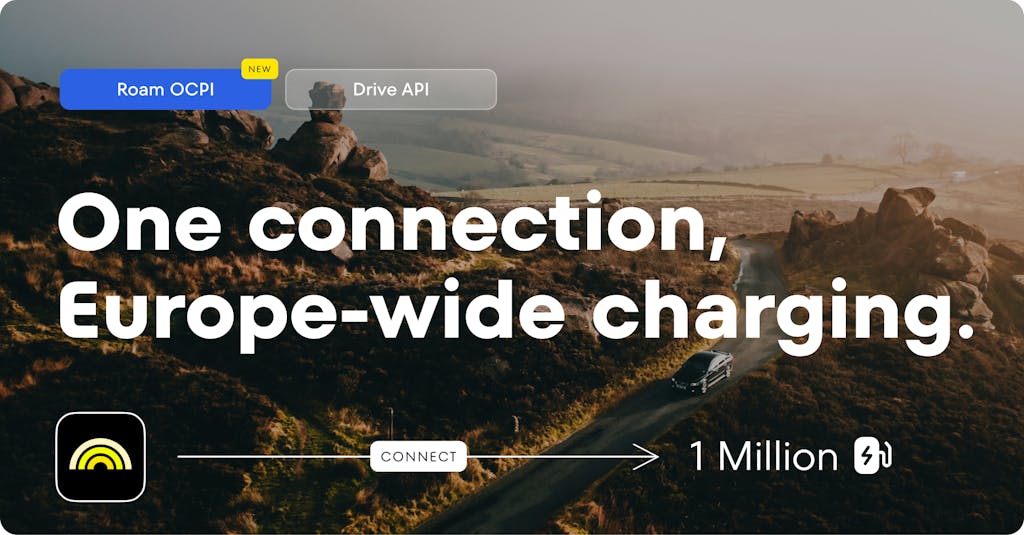
Hi Lena, thanks for taking the time to chat with me! Tell me more about your background and what got you interested in mobility and sustainability.
I have a classic art education and graduated with a degree in graphic design. After I graduated, I started taking product design courses on the side for fun and realized that I love to help people solve their problems. This is what product design is all about. I also really love to explore new technologies.
I started out working at a Russian ecommerce company and then later went on to run my own business. I also participated in all the product bootcamps and hackathons that I could, just to try out different industries to develop my skills further and explore what interested me.
I came to central Europe and settled first in the Netherlands, where I worked on a product that helped make public social benefits more accessible to citizens. It was an extremely valuable experience because I got to see how the social system works and help people in a tangible way. The product made it easy for families to access subsidies and use them access important things like learning supplies. Our company won an award for best IT startup of the year in the Netherlands. That experience taught me that I want to work on products that bring more value to society, especially in an industry that is emerging.
You’ve been at Plugsurfing for a couple of months now. What are your observations so far about the EV industry?
The EV industry itself is a classic emerging market. It’s growing rapidly, but it doesn’t have the signs of a mature and stable industry. It’s not well-developed or structured enough yet. For designers, this is a great moment because while it gives us some challenges, it also gives a lot of space to take what exists, however fragmented and immature, and design a system that is thoughtful and intentional.
One example I have been thinking about recently is the development of the ecommerce industry. Fifteen years ago, people started to explore the internet and buy clothing online. The user experience was not smooth at all, and a lot of the processes weren’t sophisticated or complete. The people who were exploring and testing at that time greatly influenced the better experience we see today. For example, fast delivery and transparent logistics emerged as one of the most important factors in building trust with consumers after they had placed an order.
Right now, EV charging is at the same stage that ecommerce was fifteen years ago. Our drivers and platform users are patient and learning. Drivers are exploring how to use and charge an EV car; charge point operators are learning about what types of issues chargers can experience and how to better operate their businesses.
Sitting and talking with charge point operators and emobility service providers helps us gain more knowledge about what this exploration process looks like firsthand. With these observations, we can start to provide a better user experience. For example, the more we understand the range of errors that are being sent from chargers, the more clearly we can display that information to our customers. Of course, that helps them to better prevent errors and operate their business more efficiently.

You’ve made a conscious effort to get to know the customers in our Plugsurfing alliance. What methods do you use to learn more about the customer experience?
There is a gap between what our team knows and what the customer experiences. That’s a gap you must try to fill by researching, interviewing, and collecting knowledge in a systematic way. We use customer journey mapping to chart the customer’s entire interactions with our products and services. We first collect information by interviewing our internal stakeholders. Based on this, we talk with our users and try and get a closer understanding of which touchpoints along the journey are important, which are problematic, and if the live journey matches our internal expectations. This user-centered design process helps us understand what the most important gain creators are, which is the north star of developing and designing the product further.
What did you learn so far from our customers and how does that sharpen your focus?
One main observation is that we have customers with different backgrounds and levels of experience in the EV industry.
Some of the customers are from more developed markets, like Norway, and have worked in emobility for a long time. As a result, they have much larger, established companies with elaborated organizational hierarchies to handle different aspects of EV charging. They speak the emobility language and have a technical literacy and engineering teams that are quite strong.
On the other side, there are customers from countries where the emobility market is just kicking off. They’re enthusiasts who are curious and motivated to take part in the budding global sustainability trend. But they also have a lot to learn about the deeper technical aspects of emobility.
This year, the Product Design Team’s goal will be to have a platform and solution where people from these two different worlds can work easily, collaborate, and grow their businesses. To do that, we’re going to have to reduce the complexity of the Power Platform and focus on learnability of the interface. The vision is that a customer, regardless of their technical background, can open the interface and have a clear understanding of what they need to do to get their most important jobs done.
How do you see wider trends for enterprise or B2B products impacting your own vision for the Plugsurfing Power Platform?
An important trend in product and product design is that B2B platforms start to follow the same approach to user experience that B2C platforms have had for a while.
For the longest time, there has been this outdated mind trap or bias that B2B products don’t need to be user friendly. For this reason, we see that a lot of platforms still look like an Excel document from 1995.
I have seen a shift in the approach in some Russian technology companies, especially in the Fintech sector. They’re taking the learnings from the B2C customer experience and bringing them into business applications, changing the whole industry. The trick is to bring the learnings from successful B2C product design into the playbook for B2B products. It’s too easily forgotten, but the buyers and daily users of enterprise products are people, too! There’s no reason that platform design should sacrifice their emotions and connection to the work that they do. A lot of the business in our industry are mission-driven anyhow and the products they use should resonate with that.

